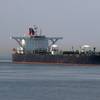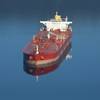The head of Norway's maritime directorate said a high-speed ferry that went down in rough seas was licensed to sail only in relatively calm waters.
The ultra-modern Sleipner catamaran hit rocks and sank, with the loss of up to 19 lives, on its way along Norway's west coast from Stavanger to Bergen on Nov. 26.
Ivar Manum, director-general of the directorate that regulates shipping, said the vessel had been in operation just three months and was limited to sailing in wave heights up to 3.3 ft. (1 m).
The craft's evacuation procedures and life-saving equipment had been tested in calm conditions only and were due to undergo further tests in rougher waters, he said.
Coastguards estimate that waves were more than 6.6 ft. (2 m) high on the night the ferry sunk.
"There are always operational limits on these high-speed craft. What consequences this breach had for the accident I cannot say," Manum added.
Additionally, the Norwegian government has withdrawn the operation permit for the Sleipner's sister ship, the Australian-built ultra-modern Draupner catamaran, which came into service along with the ill-fated vessel in August. The Maritime Directorate has ordered the vessel to check its life-raft system, officials said.
"There is a whole lot of information and indications that there might be something wrong with the life-raft and release system," said Magne Roedland, the Bergen district manager for the Maritime Directorate.
"We have withdrawn Draupner's certificate until tests have been carried out," he said.
Approximately 80 similar high-speed craft operate along Norway's 21,500 km of coastline including fjords and bays. More people use ferries than aircraft to travel along the coast.
In some towns, mourners lit candles in the streets, partly as a symbolic call for more lighthouses along the rugged coast.
Justice Minister Odd Einar Doerum has ordered a commission to investigate safety on ferry routes and rescue procedures in addition to an enquiry into the Sleipner's sinking.
Some of the 70 survivors criticized the crew of the Sleipner for failing to evacuate passengers more quickly after the three-month-old catamaran ran onto a rock in rough seas off Haugesund on Norway's west coast.
The boat's owners admitted the captain and crew may have waited too long before evacuating passengers from the vessel.
"It appears as if the crew judged the situation as much less serious than it apparently was," said Arne Dvergsdal, managing director of Hardanger Sunnhordlandske Dampskipsselskap.
The crew apparently assumed that passengers were safer aboard the Australian-built vessel, which initially seemed perched on rocks, than risking taking to the lifeboats. However, the vessel abruptly broke apart and sank about 45 minutes after running aground about 3,000 ft. (1 km) off shore, forcing many to leap into the sea.
Survivors complained that they got little information about the crash for the first 15 minutes. The captain, however, did send a mayday as soon as the vessel ran aground.
A search continued last week to find people still missing and presumed dead from Sleipner. A robot submarine lifted bodies from the wreck, lying almost 328 ft. (100 m) deep near the rocks where it ran aground.
All the identified dead were apparently Norwegian citizens except for one man, a Kurd who was seeking a residence permit in Norway after leaving Turkey. The dead were aged between 17 and 78. Many were oil workers returning home.
The Sleipner's sinking was the worst maritime accident off Norway since 158 people died when the Scandinavian Star caught fire south of Oslo after a suspected arson attack in 1990. - (Reuters)
Sponsored Content
Avid Controls Pledges Lifetime Support for MV3000 Line

Subscribe for
Maritime Reporter E-News
Maritime Reporter E-News is the maritime industry's largest circulation and most authoritative ENews Service, delivered to your Email five times per week










